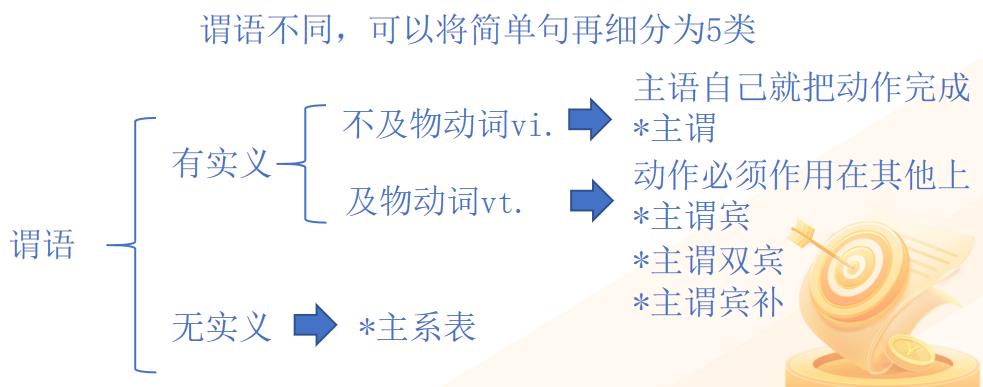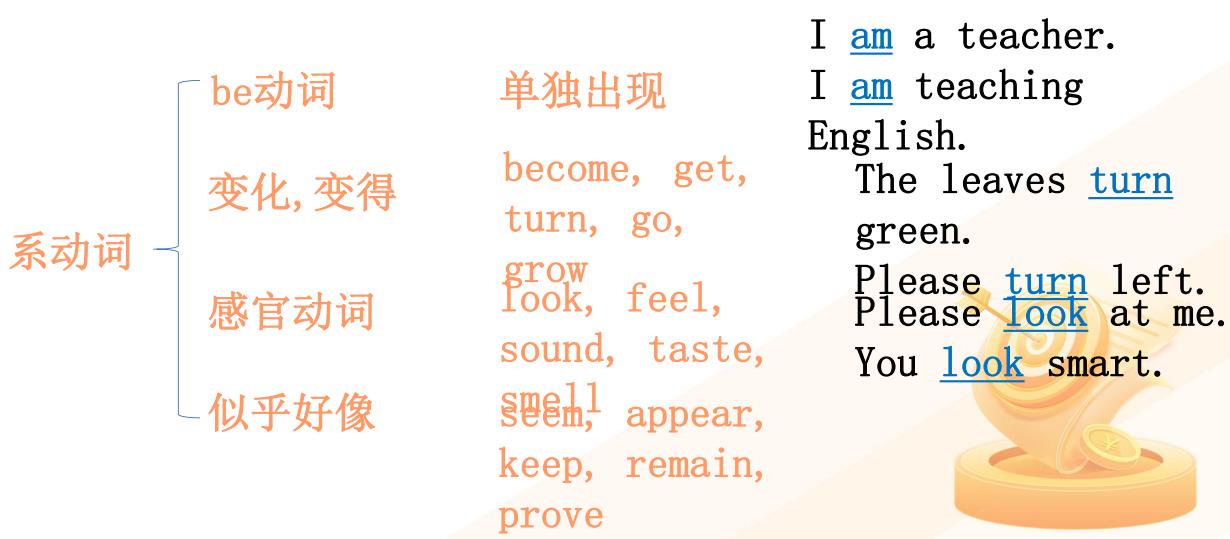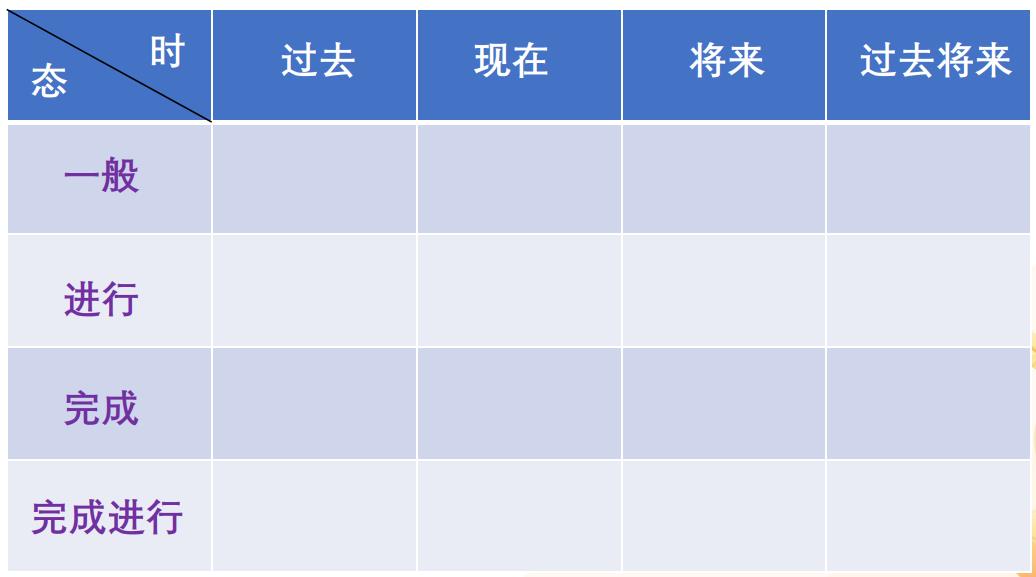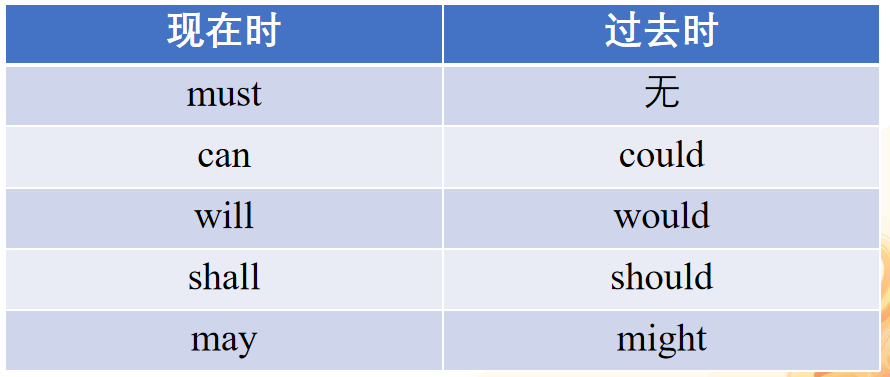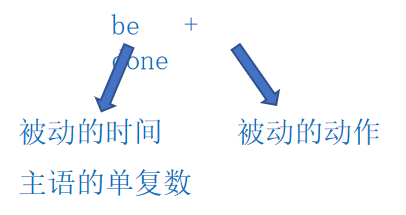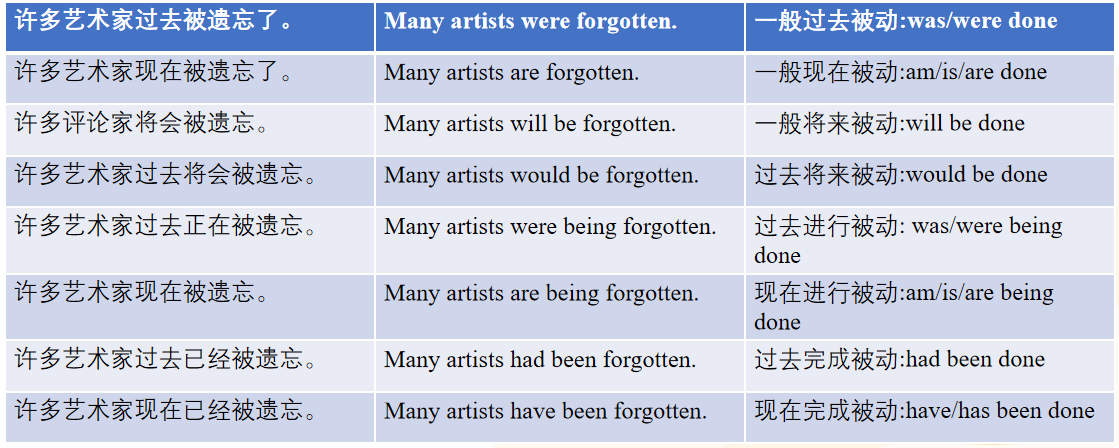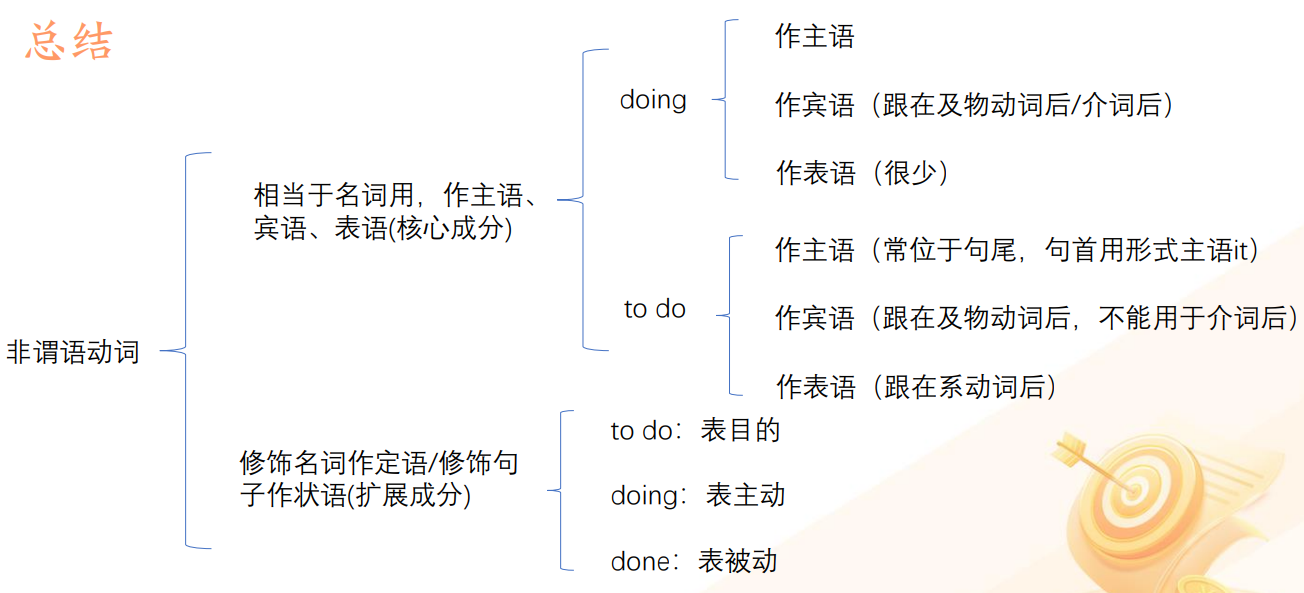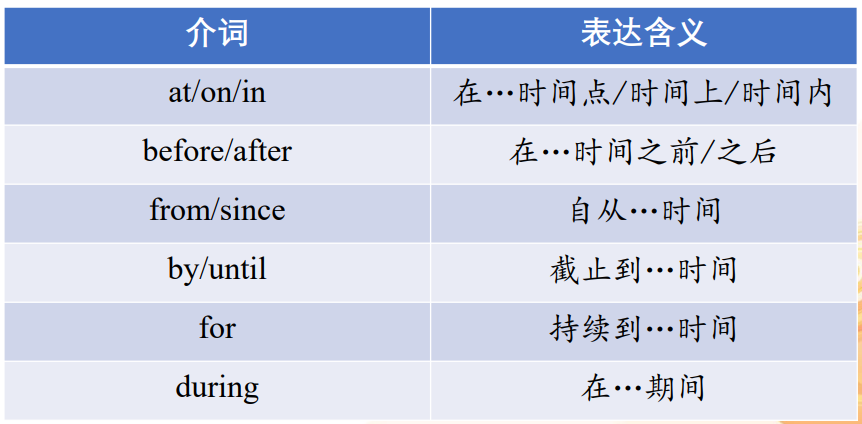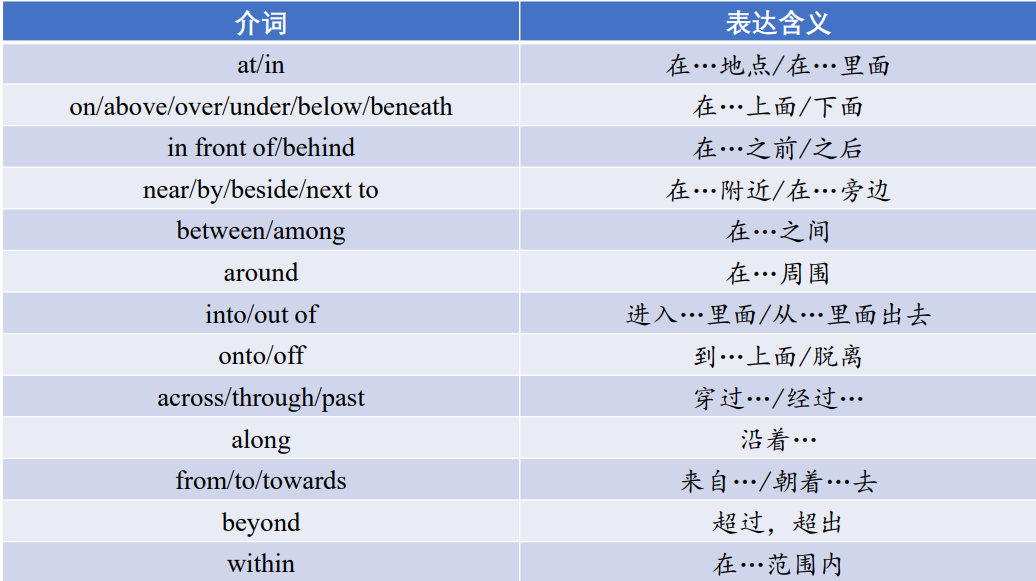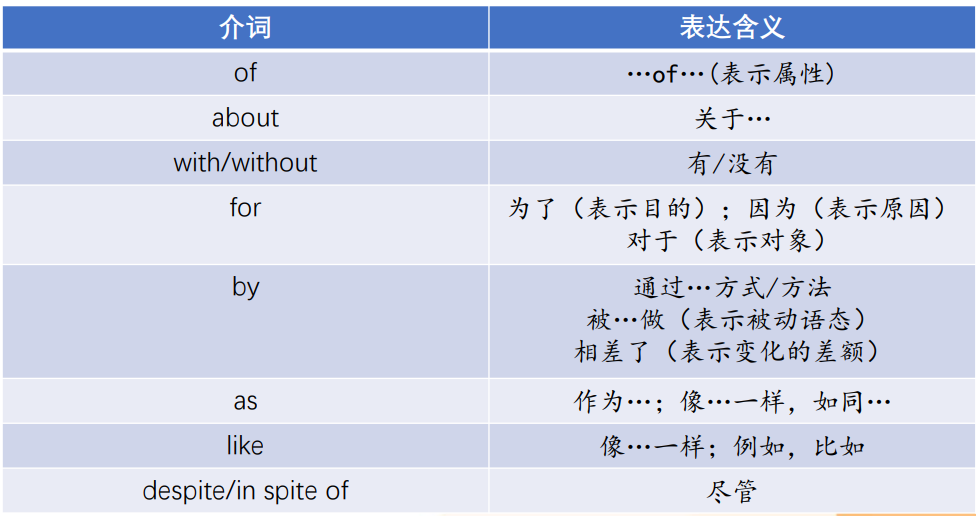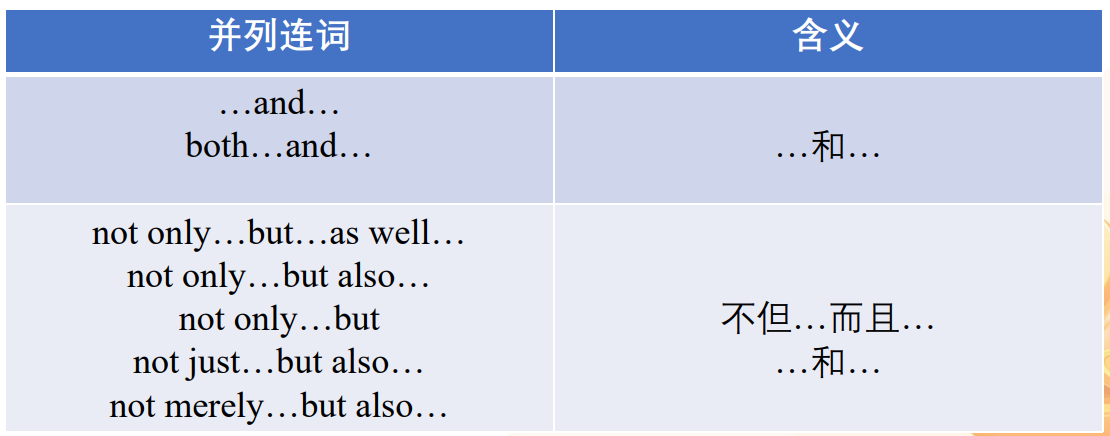英文语法的简单总结
基本句型
基本结构
- 主谓,SV
- 主谓宾,SVO
- 主谓双宾,SVO1O2
- 主谓宾补
- 主系表
区分主谓宾、主谓宾补
- 双宾:一个是人(类似于人的对象/机构)一个是物
- 宾补:构成完整的一句话(逻辑上构成主谓),在宾语与补语加“是”
- is
- are
- am
- was
- were
谓语动词
每个动词必带时态:时现间在和状态
时态
一般时态
- 一般过去时,谓语动词 did
- 完全发生在过去,现在不这样了
- 一般现在时:谓语动词does/do
- 第三人称单数:它/他/她 不可数名词可数名词单数
- 强调现在:静态的现在的状态
- 强调现在:动态的动作-现在经常性习惯动作
- 一般将来时:will+do/I+shall +do/am/is/are
- 现在的之后
- 一般过去将来时:would+do或was/were going to do
进行时态
- 过去进行时:谓语动词 was/were+doing
- 现在进行时:谓语动词 is/am/are+doing
- 将来进行时:谓语动词 will be doing
完成时态
- 过去完成时:谓语动词had+done 过去的之前
- 现在完成时:谓语动词have/has+done 现在的之前
- 过去完成时发生在前,一般过去时发生在后
- 过去完成时:跨越了两个时间段,过去之前+过去
- 将来完成时:谓语动词will have done 将来的之前

完成时态:阶段性总结
- 过去完成时:had done
- 现在完成时:have/has done
- 将来完成时:will have done
完成进行时 强调进行的过程
- 谓语动词:have/has/had been doing
情态动词的使用
- 情态动词后面加动词原形,谓语动词是be,就是情态动词+be
- 情态动词一般只有现在和过去两种时态
- 情态动词没有人称的变化
- 情态动词变否定,在后面加not;变疑问,直接把情态动词提到主语前
情态动词表示“推测”:
- 可能性最高must
- 最低can’t/couldn’t
–
强调· 谓语动词:
- do
- does
- did +do
非谓语动词
非谓语
- 句中一主一谓,一一搭配,其他动词降级为非谓语
- 除了谓语不能做,其他成分都可以
几种非谓语动词
- doing
- done
- to do
出现doing/done/to do就一定是非谓语吗?
- to do出现一定是非谓语
- doing/done有限制条件
非谓语动词的用途
- 相当于名词,做主语、宾语、表语(核心成分)
- 修饰名词/句子,做定语、状语(扩展成分)
非谓语动词doing/to do作主语
- Making friends is extremely important for teenagers.
- Putting your faith in the wrong place often carries a high price.
- To imagine a time when high-quality arts criticism could be found in most big-city newspapers is difficult to the point of impossibility
形式主语
- it 填补主语的空缺 真正的主语放在句尾
- It is difficult to the point of impossibility to imagine a time when highquality arts criticism could be found in most big-city newspapers.
句型模板:It is adj. (for sb) to do sth.
- It is painful to read these roundabout accounts today
- It seemed paradoxical to talk about habits in the same context as creativity and innovation
句型模板:It takes sb. some time to do sth.
- It took Beaumont decades to perfect her craft.
- In regular time it takes nine years to get a doctoral degree in humanities.
宾语:动词宾语+介词宾语
- 介词后只能接doing,不接to do
- 动词后接to do/doing, 要根据动词的习惯搭配来
- 及物动词后,非谓语动词doing/to do作宾语
- 介词后,非谓语doing作宾语
- 位于系动词后: The trick is to direct these funds better.
- 主系表结构中,主语和表语同时使用非谓语,前后形式必须保持一致
作定语(修饰成分)
- doing: 表示主动
- done: 表示被动
- to do: 表示目的
- 作定语时,不管是前置定语还是后置定语,通常翻译到名词前面,译成“…的…”.
作状语(修饰成分)
- doing: 表示主动
- done: 表示被动
- to do: 表示目的
ed到底是一般过去时还是过去分词呢
- 看意思:意思是主动-谓语
- 意思是被动-非谓语
句子的扩展
限定词:
- 冠词
- 数词
- 名词所有格
- 名词
形容词
- 形容词作定语,修饰名词,位于名词前后
- 形容词作表语,补充说明主语,位于系动词后
副词作修饰成分
- 副词修饰动词
- 副词修饰句子
- 副词修饰形容词或其他副词
形容词、副词的三种比较级别
- 原级比较:as+adj./adv.原形(比较内容)+as+比较对象
- 比较级:adj./adv.的比较级+(than比较的对象)
- 最高级:adj./adv.的最高级+(介词短语表示比较范围)
介词短语/介宾短语
- 后接名词、代词、动名词
- 补充说明事件发生的时间、地点、原因等
in/at/on最常用
- at:把地点当作一个点
- on :在一个平面
- in:立体的空间
介词短语
- 功能强大,有利于简化句子,掌握句子的主要信息
插入语
- 插入句子的成分,补充说明
主谓结构作插入语
- 表示“某人说,某人认为”
- No one, he submits, could have written it without possessing some power of reasoning.
- You can, Mr. Menand points out, become a lawyer in three years and a medical doctor in four.
副词作插入语
- These facts, however, have previously been thought unrelated.
- Politics, or, more broadly, the functioning of the state, is a major subject for journalists.
- A deal is a deal-except, apparently, when Entergy is involved.
介词短语作插入语
Other standardized tests, such as the Scholastic Assessment Test(SAT) and the Graduate Record Exam(GRE), capture the mainaspects of IQ tests.

并列结构
并列句独有的特点
主从复合句
长难句分析
步骤
- 找到插入语去掉,比如:– xx –,中间有逗号的,逗号分割sb say的
- 找到所有谓语动词,数出个数(若是并列句谓语动词算1个)
- 谓语动词个数 - 1 = 从句个数
- 找到从句,因为从句有连接词好找
- 找到主句
从句的开始与结束
- 从句一般开始于“连接词”
- 从句结束于:
- 标点
- 下一个连接词前
- 第二个谓语动词前
特殊结构
主谓主谓
- The IASB says it does not want to act without overall planning.
- Allen’s contribution was to take an assumption we all share….
- In those far-off days, it was taken for granted that the critics of major papers would write in detail and at length about the events they covered.
主主谓谓
- When the court deals with social policy decisions, the law it shapes is inescapably political…
- The way consumers now approach the process of making purchase decisions means that marketing’s impact stems from a broad range of factors beyond conventional paid media…
其他要点
中文和英语的语法不同 1、虽然都有 Subject-Verb-Object (SVO),但是英语要求更严格,中文也可以省略部分结构 2、冠词the,不定冠词a、an 3、单数、复数形式;中文根据上下文来区分 4、时态和动词变化;中文也是根据上下文区分,动词形式不变 5、修饰语(形容词和副词) 6、相对从句,用 who、which、that修饰前面的名词;中文则是放在名词前,形容词形式 7、主谓一致,谓语必须在数量和人称上跟主语保持一致 8、介词,比如要跟 verb+ing的形式 9、代词,做主语和宾语的时候,代词是有变化的;中文则无变化
verb + ing
- Modifying Verbs (Acting as an Adverb)
- She walked down the street singing. (Here, “singing” modifies “walked,” explaining how she walked.)
- They arrived laughing. (Here, “laughing” modifies “arrived,” explaining what they were doing while arriving.)
- Modifying Nouns (Acting as an Adjective)
- The running water was cold. (“Running” modifies “water.”)
- He heard the crying baby. (“Crying” modifies “baby.”)
- Acting as a Noun (Gerund)
- Swimming is my favorite sport. (“Swimming” is the subject of the sentence.)
- I enjoy reading books. (“Reading” is the object of “enjoy.”)
- Modifying Whole Clauses (Absolute Phrase)
- The sun setting, we decided to leave. (“The sun setting” modifies the whole sentence, adding context about the timing of the decision.)
- Her arms folded, she waited patiently. (This phrase modifies the main clause, describing her state.)
- In Prepositional Phrases
- She is interested in learning new languages.
- He apologized for being late.
- As a Part of Continuous Tenses
- She is running fast. (Present continuous tense.)
- They were talking when I arrived. (Past continuous tense.)
- In Reduced Relative Clauses
- The man driving the car is my friend. (Instead of “The man who is driving the car…”)
- The book lying on the table is mine. (Instead of “The book that is lying on the table…”)
